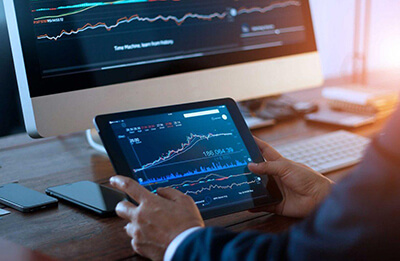Contents
The federal funds rate is the rate banks charge each other for short-term loans. Banks use this rate as a starting point to set the prime rate for consumers. The prime rate is often roughly 3% higher than the federal funds rate (and currently 3.25%). The prime rate serves as an index that banks and credit unions use to set rates on consumer loan products.
The interest rate is generally based on an index, such as the prime rate. As a result, the city’s affordability ratio—defined as the ratio of prime rate mortgage payments to household incomes—has risen from about 35% in mid-2008 to roughly 55% in 2022, according to property agency Centaline. As you can see from the table, the prime rate has returned to the levels see before the Covid-19 recession. Over the longer term, the prime rate remains well below the highs seen over the last 20 years. James Chen, CMT is an expert trader, investment adviser, and global market strategist.
“Decisions by a bank’s asset and liability committee will ultimately determine where those other rates will settle,” says Garretty. For example, if one bank wants more credit card business on their books while another does not, they will quote different credit card rates, even though they are working off the same prime rate. Malayan Banking Bhd has set a group-wide base rate at 3.2%, effective Jan 2, 2015. All new retail loans and financing such as mortgages, unit trust loans, share margin financing, personal financing and overdraft facilities which are applied for by individual customers will be based on the base rate.
Dictionary Entries Near prime rate
A smaller organization can expect to pay several percentage points above the prime rate, since there is a higher risk of default. The rate is also used to adjust the rates charged on adjustable rate mortgages, credit card debt, home equity loans, and student loans. While financial institutions set the prime rate, not the government, the prime rate tends to move in lockstep with interest rates set by the Federal Reserve. Note that the prime rate is influenced by and can fluctuate due to changes in the economy and can remain steady or shift depending on macroeconomic circumstances as well. If it goes up, you can expect adjustable rate mortgages and variable credit card rates to trend upward, and if it decreases, you can expect those to go down. Any change in the Alternate Base Rate due to a change in the Prime Rate or the Federal Funds Effective Rate shall be effective on the effective date of such change in the Prime Rate or the Federal Funds Effective Rate, respectively.
- Although the prime rate is capable of changing at any point, it’s not uncommon for years to pass without a major shift.
- According to data published by The Wall Street Journal Online and the Bank of Canada.
- Banks generally use a fed funds + 3 to determine the current prime rate.
- The term “prime rate” refers to the interest rate that large commercial banks charge on loans and products held by their customers with the highest credit rating.
- Most recently, the Fed has chosen to keep the funds rate between 0% – 0.25% in order to stimulate the economy as it recovers from COVID-19.
The rates charged to consumers are relative to a bank’s prime rate. More commonly this is known as the Wall Street Journal prime rate, as the business and financial newspaper publishes the figure. This is an average of the lending rates of the 10 biggest US banks.
What Is the Impact of the Prime Rate?
A short-term interest rate that banks charge their highest-rated customers and commonly used as a benchmark to set other interest rates. Fixed-rate financial products, such as many personal loans and auto loans, won’t fluctuate since you lock in your interest rate when you open freelance java programming the loan. The prime rate is largely meant for corporate clients, not individuals, who are unlikely to obtain it. Rather, in the context of real estate transactions, it’s best thought of as a general barometer for how mortgage interest rates and payments may wax and wane.

Effective January 2, 2015, the Base Lending Rate structure was replaced with a new Base Rate system. Under BR, which will now serve as the main reference rate for new retail floating rate loans, banks in Malaysia can determine their interest rate based on a formula set by Bank Negara, the Malaysian central bank. The prime rate is reserved for only the most scalping candlestick patterns qualified customers, those who pose the least amount of default risk. Prime rates may not be available to individual borrowers but are offered to larger entities, such as corporations and stable businesses. If the prime rate is set at 5%, a lender still may offer rates below 5% to well-qualified customers which are not considered a mandatory minimum.
How Is The Prime Interest Rate Used?
The prime rate is an important element in the overall state of the U.S. economy and in your personal finances as well. The interest rate charged on such loans by a central bank is called the discount rate, base rate, or repo rate, and is separate and distinct from the prime rate. “This is unlike other rates that move daily/weekly according to short term financial market, supply and demand conditions,” says Garretty. The prime rate is the interest rate banks charge their best customers for loans. Banks generally use a fed funds rate + 3 to determine the current prime rate. The prime rate is set by Bank of America based on various factors, including the bank’s costs and desired return, general economic conditions and other factors, and is used as a reference point for pricing some loans.
Thus, the prime rate is likely to increase as a result, since large corporations are probably also facing more difficult economic conditions. Such circumstances may affect the large corporations’ abilities to pay off existing debt, which, in turn, places downward pressure on their credit scores and ultimately results in hikes in the prime rate. Historically, in North American banking, the prime rate was the actual interest rate, although this is no longer the case.

You may hear this term thrown around a lot in the financial news or when reading up on loans and mortgages. That’s because the prime rate affects every level of the economy. The overnight rate is the interest rate that banks charge on money lent to other banks, which are deemed to be the most creditworthy entities in an economy, next only to the government. If the top customers of a commercial bank see their credit decrease, it can be an indicator of the downward pressure placed by the economic climate on all borrowers of the bank.
What is the current prime rate?
Commercial banks can charge lower rates to preferred borrowers – usually corporate customers – because these borrowers are less likely to default and the loans are considered safer. The term prime rate refers to the interest rate that commercial banks charge their most creditworthy Top 5 Binary Options Platforms customers. The Federal Reserve sets the federal funds overnight rate which serves as the basis for the prime rate, which is the starting point for other interest rates. The prime rate used to be defined as the interest rate at which banks lend to their most creditworthy customers.
Related Terms
Though certain banks may be setting a higher BR compared to others, they can sometimes offer lower ELR to customers in order to remain competitive. Loans that are already approved and extended prior to January 2, 2015 will still follow the old BLR until the end of the loan tenure. Prior to December 17, 2008, the Wall Street Journal followed a policy of changing its published prime rate when 23 out of 30 of the United States’ largest banks changed their prime rates. Recognizing that fewer, larger banks now control most banking assets , the Journal now publishes a rate reflecting the base rate posted by at least 70% of the top ten banks by assets. The Wall Street Journal surveys the largest financial institutions in the country to determine the rate they are using and then publishes this rate as the prime rate. This number is generally 3 percent higher than the federal funds target rate.
The prime rate, as reported by The Wall Street Journal’s bank survey, is among the most widely used benchmark in setting home equity lines of credit and credit card #kot4x Photos,videos,stories rates. It is in turn based on the federal funds rate, which is set by the Federal Reserve. The COFI is a widely used benchmark for adjustable-rate mortgages.
While the prime rate can adjust any time, it tends to majorly shift only when a benchmark – for example, the federal funds rate – is adjusted. Severe economic pullbacks are often a major predictor of when the prime rate will drastically change, such as COVID-19, when the prime rate was at one of the lowest levels. Although the prime rate is capable of changing at any point, it’s not uncommon for years to pass without a major shift.
When you visit these sites, you are agreeing to all of their terms of use, including their privacy and security policies. Before acting on any information in this material, you should consider whether it is suitable for your particular circumstances and, if necessary, seek professional advice. Any opinions expressed herein are given in good faith, are subject to change without notice, and are only correct as of the stated date of their issue. Changes to the interest rate of any Credit Extension based on changes to the Prime Rate shall be effective on the effective date of any change to the Prime Rate and to the extent of any such change.
For others, the prime rate forms the basis or starting point for most other interest rates. The interest these borrowers are charged, which is based on their credit scores and credit histories, is normally prime plus a certain percentage. Those who have a good credit score would be charged, say, prime plus 9% for a credit card while those with a lower score may get a rate of prime plus 15%. Prime rate, or prime lending rate, is the interest rate commercial banks charge on loans to preferred borrowers. The prime interest rate is lower than the interest rates charged to less creditworthy borrowers.